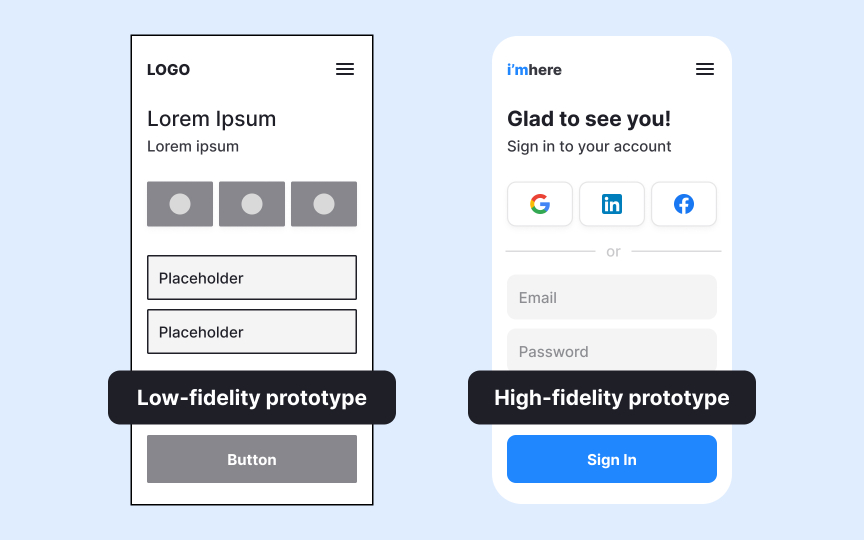Determining design fidelity
Choosing the right level of design fidelity is crucial for maintaining agility while ensuring quality. Fidelity refers to how closely a design represents the final product in terms of visual detail, content, and interaction. Many teams struggle with creating either overly detailed designs too early or providing too little guidance for implementation:
- Low-fidelity designs (rough sketches, wireframes) work best during early concept exploration. They allow quick iteration without attachment to specific solutions and support collaborative ideation. The focus stays on solving the right problem rather than perfecting visuals.
- Medium-fidelity designs (simplified UI with realistic structure but placeholder content) are appropriate when refining validated concepts. They help teams understand flows and layouts while allowing flexibility for technical considerations. This level works well for backlog refinement and sprint planning.
- High-fidelity designs (polished visuals with real content) should be reserved for specific purposes: final validation before implementation, realistic user testing, new patterns not in the design system, and external-facing materials. Premature high-fidelity mockups often lead to wasted effort and resistance to necessary changes.

